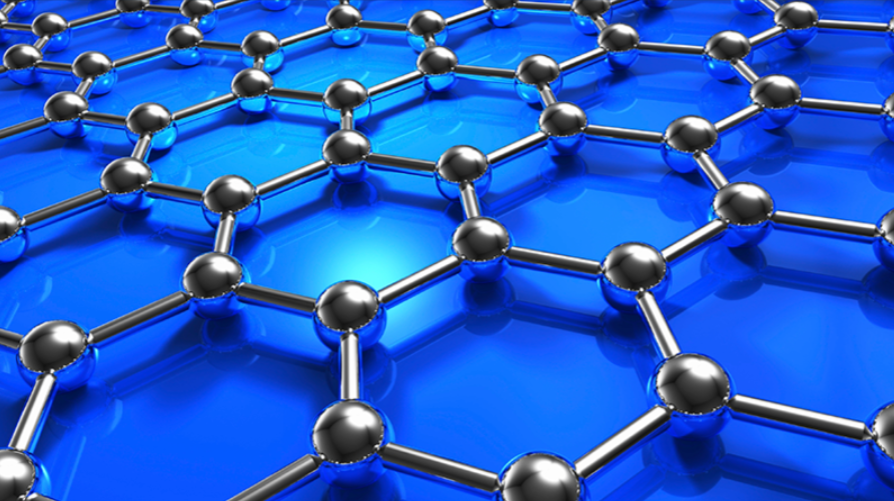Graphene in Advanced Heat Spreaders for Microelectronics: Redefining Thermal Management
As the computing industry races toward smaller, faster, and more powerful microelectronics, managing heat has become one of the greatest engineering bottlenecks. Whether it’s a smartphone processor, a laptop GPU, or a server cluster, excessive heat severely limits device performance, reliability, and lifespan.

Traditional heat spreaders — made from copper, aluminum, or graphite — are now reaching their physical limits. Enter graphene, a material renowned for its ultrahigh thermal conductivity, mechanical strength, and atomic thinness. With a thermal conductivity reaching up to 5000 W/m·K in pristine form, graphene represents a revolutionary leap forward for next-generation cooling solutions in electronics.
The Thermal Management Challenge
As transistors shrink below 5 nm and device power densities exceed 100 W/cm², localized heat accumulation leads to:
-
Thermal throttling (automatic slowdown to prevent damage)
-
Reduced reliability due to electromigration
-
Increased leakage current and energy waste
-
Premature device failure
Conventional materials like copper (≈400 W/m·K) and graphite (~200–500 W/m·K) cannot dissipate heat fast enough on such a small scale, especially in 2D or stacked chip architectures (e.g., HBM memory, chiplets).
This is where graphene’s atomically thin yet thermally super-efficient nature becomes critical.
What Makes Graphene Ideal for Heat Spreaders
1. Exceptional Thermal Conductivity
Pristine monolayer graphene exhibits a measured thermal conductivity of 3000–5000 W/m·K (Balandin et al., Nano Letters, 2008).
-
This is 10× higher than copper and 2× higher than diamond on a per-weight basis.
-
Even when processed into films or composites, graphene maintains conductivities of 1000–2000 W/m·K, far exceeding conventional materials.
2. In-Plane Heat Transfer Efficiency
Graphene conducts heat anisotropically — extremely well in-plane, but less through-plane. This makes it perfect for lateral heat spreading on chips or flexible substrates.
3. Ultra-Thin and Lightweight
At only 0.34 nm per layer, graphene films can be layered or coated directly onto chips without adding bulk.
This makes it compatible with compact mobile devices and thin laptops, where space is at a premium.
4. Mechanical Strength and Flexibility
Graphene has a tensile strength of 130 GPa and Young’s modulus of ~1 TPa, ensuring mechanical durability under repeated thermal cycles and device bending.
5. Chemical and Thermal Stability
Graphene remains stable up to ~600°C in air and >1000°C in inert atmospheres, outperforming polymer or metal-based coatings in extreme operating environments.
Working Principle: How Graphene Dissipates Heat
Graphene’s heat conduction relies primarily on phonon transport — quantized lattice vibrations that carry thermal energy across the sheet.
In crystalline graphene, the mean free path of phonons can exceed 500–800 nm, meaning heat can flow almost unimpeded.
Key mechanisms include:
-
In-plane phonon propagation: Heat moves rapidly along the honeycomb lattice.
-
Interfacial phonon coupling: When graphene is applied to a substrate (e.g., silicon, copper), phonons must transfer across interfaces — the main source of resistance.
-
Multilayer synergy: Stacking graphene layers or combining with graphite reduces interface scattering and enhances macroscopic heat spreading.
Through simulation (DFT + MD models), researchers show that few-layer graphene (3–5 layers) often provides the best balance between thermal conductivity and mechanical stability for device integration.
Types of Graphene-Based Heat Spreaders
1. CVD Graphene Films
-
Synthesized via chemical vapor deposition (CVD) on metal foils, then transferred to substrates.
-
Offer high in-plane conductivity (>1500 W/m·K).
-
Ideal for high-end processors and RF devices.
2. Graphene Paper and Foils
-
Created by filtering or hot-pressing graphene flakes into dense sheets.
-
Conductivity: 800–1500 W/m·K; flexible and scalable.
-
Used in smartphones and LED modules.
3. Graphene–Copper Hybrid Films
-
Combining copper’s bulk conductivity with graphene’s interface resistance suppression yields Cu/graphene composites.
-
Graphene coating reduces oxidation and improves long-term stability.
-
Example: Graphene-coated Cu interconnects show 30–50% lower thermal resistance and 2× longer lifespan (Samsung Advanced Institute of Technology, 2021).
4. Graphene–Polymer Composites
-
Embedding graphene flakes or nanoplatelets (GNPs) in polymer matrices (e.g., epoxy, PDMS).
-
Offers moderate conductivity (10–50 W/m·K) but excellent flexibility and manufacturability.
-
Common in flexible circuits and wearable devices.
5. Graphene Aerogel Heat Spreaders
-
Ultra-light, 3D porous graphene networks capable of heat diffusion and shock absorption simultaneously.
-
Ideal for lightweight electronics and satellite systems where mass reduction is crucial.
Experimental Demonstrations
Several public studies highlight graphene’s remarkable performance in thermal management:
| Study | Material | Thermal Conductivity | Temperature Reduction | Application |
|---|---|---|---|---|
| Balandin et al. (Nano Lett., 2008) | Monolayer graphene | ~5000 W/m·K | — | Theoretical benchmark |
| Goli et al. (Appl. Phys. Lett., 2014) | Graphene laminate | 1800 W/m·K | 25% cooler CPU | Smartphone processors |
| Lee et al. (ACS Nano, 2015) | Graphene-Cu hybrid | 2200 W/m·K | 40% lower hotspot | Flexible circuits |
| Zhang et al. (Carbon, 2018) | Graphene film on Si | — | 20°C lower chip surface | Microprocessors |
| Samsung Research (2021) | Graphene–Cu coating | — | +85% heat spread rate | Galaxy mobile SoC prototype |
These studies confirm that graphene can reduce chip temperatures by 10–30°C, a dramatic improvement over conventional thermal interface materials (TIMs).
Industrial Applications
1. Smartphones and Tablets
Manufacturers like Huawei, Xiaomi, and Samsung have integrated graphene thermal films in flagship devices to manage heat from high-performance processors.
-
Example: Samsung’s Galaxy Note 20 Ultra uses graphene-based heat spreaders to cool the Exynos 990 chipset, maintaining stable frame rates during gaming.
2. Laptops and Gaming PCs
Graphene-coated copper sheets are now tested in ultra-thin laptops, enabling silent fanless cooling or smaller heatsink designs without thermal throttling.
3. Server and Data Center Cooling
With AI workloads demanding high power density GPUs and CPUs, graphene foils are explored for heat dissipation in densely packed server environments, offering both weight reduction and thermal reliability.
4. Flexible and Wearable Electronics
Graphene’s flexibility allows integration into curved surfaces like smartwatches, AR glasses, and electronic textiles, where traditional heat sinks cannot fit.
Advantages over Traditional Heat Spreaders
| Property | Copper | Graphite | Graphene |
|---|---|---|---|
| Thermal Conductivity (W/m·K) | ~400 | 200–500 | 1500–5000 |
| Thickness | >100 µm | 10–50 µm | <1 µm |
| Weight Density (g/cm³) | 8.9 | 2.2 | 1.0–1.5 |
| Corrosion Resistance | Moderate | Good | Excellent |
| Mechanical Flexibility | Poor | Fair | Excellent |
| Scalability | Mature | Mature | Rapidly improving |
| Thermal Stability | High | High | Very high (up to 600°C) |
Challenges
Despite remarkable potential, several technical challenges remain before graphene heat spreaders become mainstream:
-
Interfacial Thermal Resistance (ITR)
-
Heat transfer between graphene and substrate materials (like silicon or polymer) is often hindered by weak van der Waals bonding.
-
Surface functionalization or metal interlayers are being researched to minimize ITR (<10⁻⁸ m²K/W target).
-
-
Scalability and Cost
-
Producing large, defect-free graphene films (>6 inches) remains costly.
-
Roll-to-roll CVD and liquid exfoliation techniques are being scaled industrially.
-
-
Mechanical Integration
-
Achieving strong adhesion while maintaining thermal performance requires optimized surface engineering (e.g., plasma activation, adhesive graphene composites).
-
-
Oxidation and Stability
-
While graphene is oxidation-resistant, defects and grain boundaries may degrade at high temperatures in air.
-
Encapsulation or protective coatings are needed for reliability.
-
Theoretical Insights
According to phonon transport simulations (Molecular Dynamics + Boltzmann Transport Equation models):
-
Single-layer graphene: Thermal conductivity ≈ 4000–5000 W/m·K.
-
Few-layer graphene (5–10 layers): ≈ 1500–2500 W/m·K.
-
Graphene composite with Cu substrate: Effective conductivity ~2× that of Cu alone.
Density Functional Theory (DFT) studies also show that phonon scattering at graphene–metal interfaces can be minimized through surface matching and chemical bonding, suggesting that hybrid graphene–Cu composites can achieve >85% of pristine graphene performance in real devices.
Future Directions
-
Hybrid Graphene–Diamond or Graphene–BN Films
-
Combining graphene’s in-plane conduction with diamond’s cross-plane performance for multidirectional heat dissipation.
-
-
Printable Graphene Inks for On-Chip Cooling
-
Inkjet-printed graphene heat spreaders directly on microchips and flexible substrates.
-
-
3D Graphene Networks
-
Vertically aligned graphene foams or aerogels that provide simultaneous heat conduction and mechanical damping.
-
-
AI-Optimized Thermal Design
-
Using thermal simulation and machine learning to design custom graphene heat paths within densely integrated chips.
-
Graphene heat spreaders represent a paradigm shift in thermal management for microelectronics. With its unmatched thermal conductivity, mechanical flexibility, and atomic thinness, graphene enables faster, cooler, and more compact devices — from smartphones and laptops to servers and next-generation IoT hardware.
As synthesis costs fall and integration techniques mature, graphene is set to become the new standard for high-performance heat spreading, pushing the boundaries of what modern electronics can achieve.
In the near future, graphene-enhanced cooling could be the key enabler of sustainable high-speed computing, ensuring both energy efficiency and reliability across the digital ecosystem.

